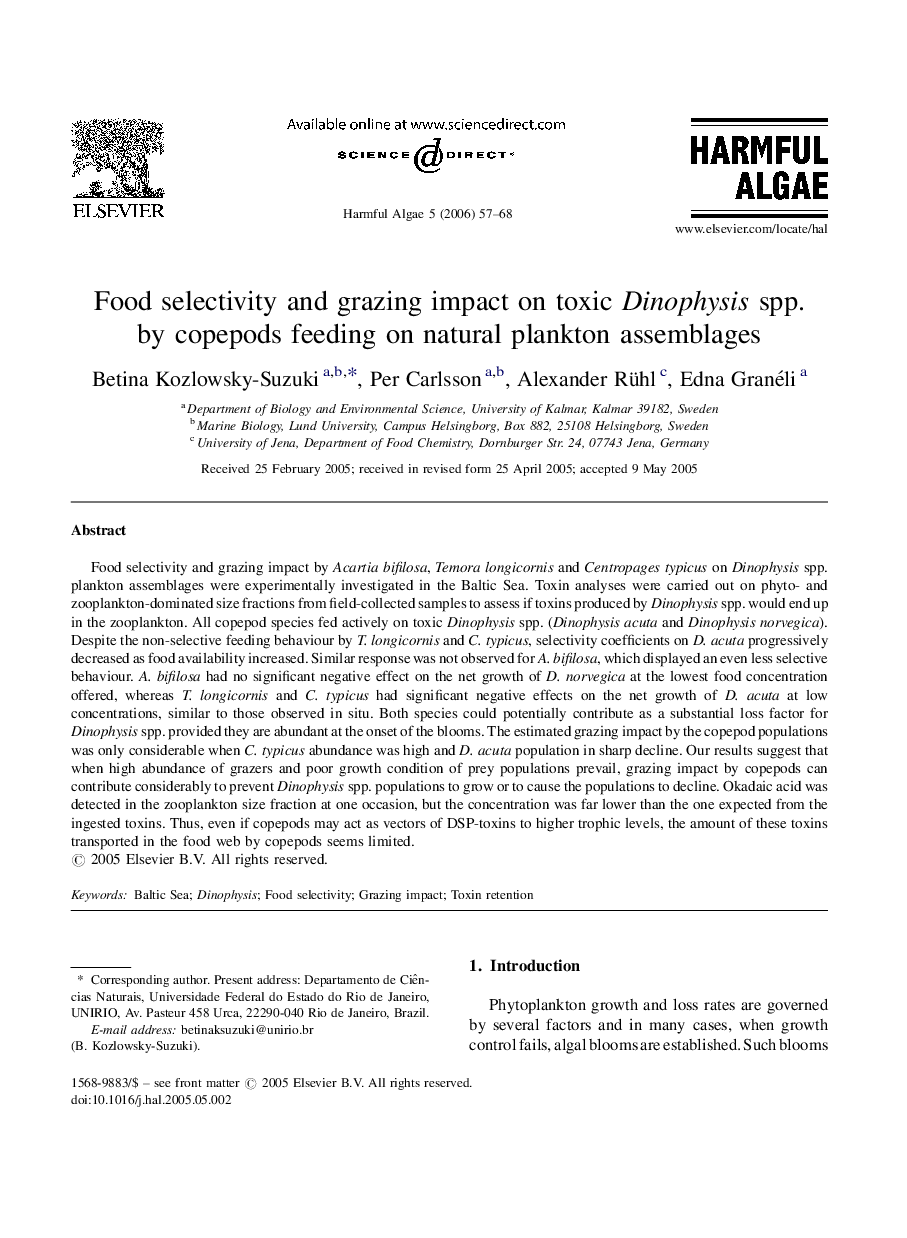| کد مقاله | کد نشریه | سال انتشار | مقاله انگلیسی | نسخه تمام متن |
|---|---|---|---|---|
| 4546239 | 1327497 | 2006 | 12 صفحه PDF | دانلود رایگان |

Food selectivity and grazing impact by Acartia bifilosa, Temora longicornis and Centropages typicus on Dinophysis spp. plankton assemblages were experimentally investigated in the Baltic Sea. Toxin analyses were carried out on phyto- and zooplankton-dominated size fractions from field-collected samples to assess if toxins produced by Dinophysis spp. would end up in the zooplankton. All copepod species fed actively on toxic Dinophysis spp. (Dinophysis acuta and Dinophysis norvegica). Despite the non-selective feeding behaviour by T. longicornis and C. typicus, selectivity coefficients on D. acuta progressively decreased as food availability increased. Similar response was not observed for A. bifilosa, which displayed an even less selective behaviour. A. bifilosa had no significant negative effect on the net growth of D. norvegica at the lowest food concentration offered, whereas T. longicornis and C. typicus had significant negative effects on the net growth of D. acuta at low concentrations, similar to those observed in situ. Both species could potentially contribute as a substantial loss factor for Dinophysis spp. provided they are abundant at the onset of the blooms. The estimated grazing impact by the copepod populations was only considerable when C. typicus abundance was high and D. acuta population in sharp decline. Our results suggest that when high abundance of grazers and poor growth condition of prey populations prevail, grazing impact by copepods can contribute considerably to prevent Dinophysis spp. populations to grow or to cause the populations to decline. Okadaic acid was detected in the zooplankton size fraction at one occasion, but the concentration was far lower than the one expected from the ingested toxins. Thus, even if copepods may act as vectors of DSP-toxins to higher trophic levels, the amount of these toxins transported in the food web by copepods seems limited.
Journal: Harmful Algae - Volume 5, Issue 1, January 2006, Pages 57–68